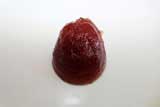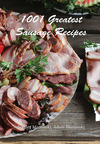Meats and Sausages
Jams and Jellies
Jellied products such as jams and jellies are preparations of fruits, vegetables and sugar, often canned or sealed for long-term storage. Traditionally made jams and jellies require sugar and long cooking times, however the availability of pectin has introduced different methods of making jellied products. They can be made faster, cheaper, with a lighter color, a softer texture and with little or no sugar. Such products are extremely attractive to those on a low calorie diet or others who have to stay away from sugar.
Jelly is a clear or translucent fruit spread made from strained fruit juice. The clarity and sparkle determine its quality. Its gel is strong enough to hold the shape of the jar when removed. The process is similar to that used for making jam, with the additional step of filtering out the fruit pulp after the initial heating. Additional pectin may be added where the original fruit does not carry enough, for example with grapes. According to US standards, jelly must not contain less than 45 parts by weight of fruit juice to each 55 parts by weight of sugar. The difference between jam and jelly is that in a jelly fruit juice is used rather than the fruit itself. Both jam and jelly are concentrated to not less than 65% solid.
Preserves are small fruits or pieces of fruits in a soft jelly (syrup). The syrup is a mixture of water and sugar. Acidic fruits are combined with heavier syrup (more sugar in water), and sweet fruits require a lighter syrup. A preserve does not hold its shape when removed from the jar. In the USA, the plural form "preserves" is used to describe all types of jams and jellies.

Ginger preserve.
Conserves are jams made from more than one fruit and may contain dry fruit or nuts.
Fruit butters, such as apple butter, are made by cooking fruit pulp and sugar until softened. Then they are run through a sieve. After sieving, the sugar is added and the pulp is cooked with constant stirring. Fruit butter is the smooth, semi-solid mixture.
Fruit leathers, also known as fruit roll ups are very popular with a younger crowd. They are made by drying a very thin layer of fruit puree to produce a soft product with a texture similar to soft leather.























